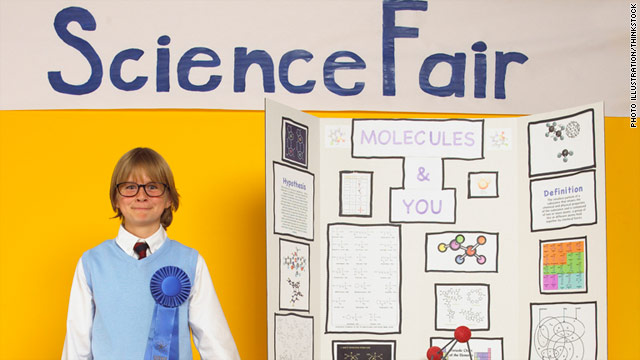"It's come up over and over and over again," says Cristin Frodella, a senior product marketing manager in education at Google.
After all, many a Googler has fond childhood memories of explaining the genius of his or her biology experiment to passersby in a school gym. (Frodella and her best friend trained hamsters to ask for food by ringing a bell.)
Today those Googlers and budding scientists worldwide should be ecstatic.
The company launched Google Science Fair, the first global online science competition. It's open to full-time students ages 13 to 18, who are encouraged to use the panoply of Google products to record and share their work.
"We want to let kids use our online tools so they can participate from anywhere in world," Frodella tells Fast Company. "They may be home schooled or live in a remote place or not have a physical science fair in their area."
They do, however, need an Internet connection.
This is a far cry from your typical local science fair. Google's competition kicked off this morning at its New York offices with some showy science courtesy of Syyn Labs, the company behind the Rube Goldberg machine for last year's OK Go viral hit "This Too Shall Pass."
Syyn's machine for Google fired a laser, activating a rover that lifted a red curtain draped over the fair's logo. Then Google brought a riveting cast of scientists on stage to inspire the 100 or so local students in attendance.
Google's partners include National Geographic, CERN, Scientific American, and Lego. Consequently, the judges are not your eighth-grade biology teacher and the football coach who took a freshman chemistry course. They include Vint Cerf, its chief Internet evangelist and one of the fathers of the Web, and National Geographic's explorer-in-residence, the geneticist Spencer Wells.
Cerf gave a brief history of the Internet, telling students that breakthroughs of that magnitude don't "just happen." They require scientists asking questions, forming hypothesis, failing, and then asking more questions. If it seems to students as if all the good stuff has already been discovered, Cerf said, remember that "95% of the universe is unknown to us. It's all Tabula rasa."
William Kamkwamba, a self-taught scientist from Malawi, Africa, talked about the direct impact that science can have, not just on society at large, but on an individual community.
From reading a library book, Kamkwamba, the son of a farmer and one of seven kids, learned how to build a wind mill, which powers his family's house and pumps water in an impoverished area. He taught his neighbors how to build wind mills, too, which have transformed schools and improved conditions in the village.
If his poignant story wasn't enough to spur the young scientists in the room and those watching the live stream of the event online, then that of Tesca Fitzgerald, a 15-year-old dynamo from Portland, Oregon, most likely did.
She began programming computers at age 5, enrolled in community college at 12, and last year was recognized for her skills by the National Center for Women and Information Technology.
One of Fitzgerald's experiments, using artificial intelligence to route robots and assist nurses in a local V.A. hospital, serves as the model project on the Google Science Fair site.
The goal of the Google Science Fair isn't just to give great prizes, including a trip to the Galapagos Islands and $110,000 in scholarships. It's to foster more interest in science worldwide and to come up with much-needed solutions to local and global problems -- if not now, then eventually.
"We want kids to make a difference in the world," says Frodella. "They can be agents of change."
The deadline for submissions is April 4. In July, 15 finalists will attend the awards ceremony at Google headquarters in Mountain View, California. Visit Google Science Fair to learn more.

No comments:
Post a Comment